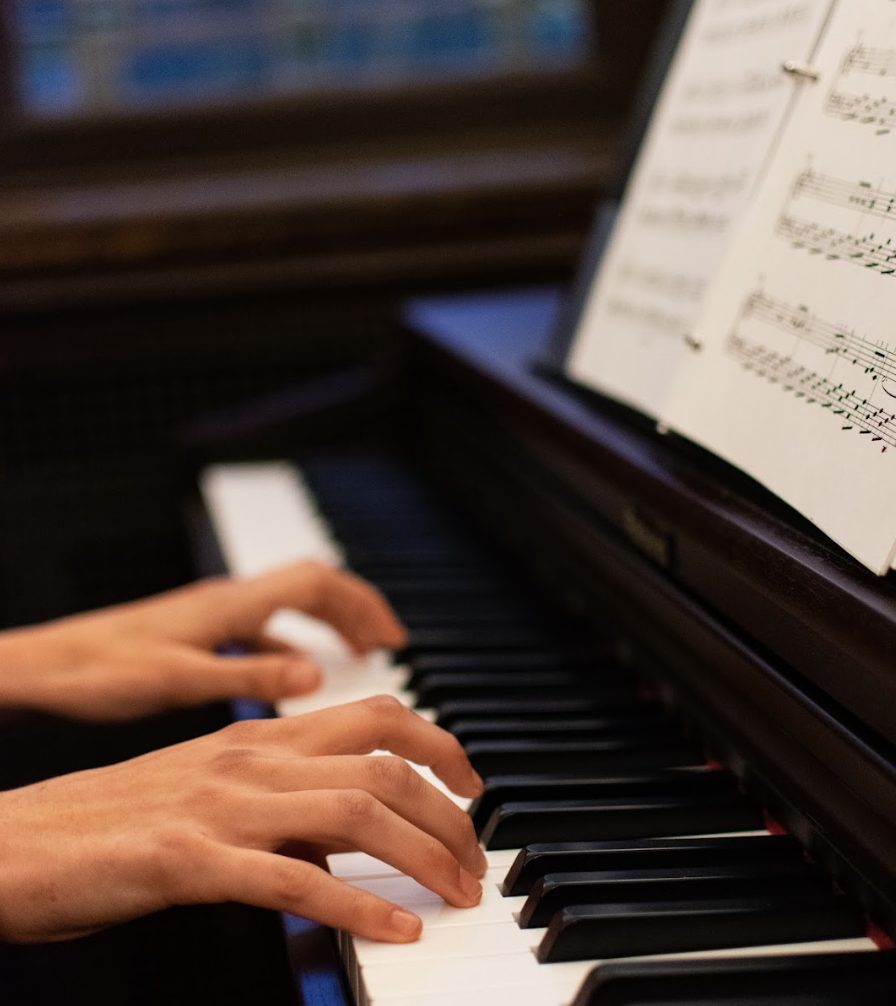At Eastern’s production of “A Year with Frog and Toad” on Saturday evening, I heard a child’s nasally little voice in the audience behind me earnestly say, “Daddy, I don’t – I don’t ever want to leave this!” Everyone else’s mental, “I know, right?!” was so loud I almost heard it, too.
Frog and Toad is a movingly simple meditation on friendship. Robert and Willie Reale created the musical, based on books by Arnold Lobel. Jessica Bostock directed and choreographed Eastern’s rendition. This timeless tale (Toad’s clock was broken) leads the viewer through the irony of care. For example, when Toad and Frog each raked the other’s yard of leaves as a secret surprise, never intending to tell the other even after the fact, neither ever found out that the leaves got messed up again in the interim. Both got home and raked their own yards.
While Frog and Toad led the show, in a sense, the air of cooperation embedded throughout the entire piece ensured that the supporting cast (including our memorably in-sync bird trio, amongst other such characters) had substantial weight in the culture of the world unfolding onstage. In the best way, not a single ensemble member was an ensemble member.
On the technical side of things, the show was punchy when necessary, without feeling insecure or overwhelming, and was evocatively pleasant. Scenes with the Snail (Aniya Sanchez) highlighted, well, the lighting work, especially: a precisely-timed spotlight caused her to burst to life onstage to start each of her scenes. Speaking of which, she committed something like temporary show theft in the second act with a song about finding her purpose in life – although actor accolades are in snail mail and will come a little later in this piece.
The musicians elicited their own bouts of applause throughout. The instrumental ensemble, expertly led by David Schwartz, was the colorful, tightly-woven hammock in which the show securely swung. Costuming delightfully crowned ‘this is a living room play for mom and dad and we’re using the dress-up box’ with actual aesthetic taste, and I went cookies for the resulting outfits. (Although, Toad looked funny in a bathing suit.) Comprised of a few cleverly designed, rotating and moving pieces, the set felt like a real home, even in its swampy elements.
Besides the Certificate of Merit in Ensemble Achievement (awarded to the production team at large) and Certificate of Merit in Directing (awarded to Julia Bostock, director) from the Kennedy Center American College Theatre Festival, I heard a host of accolades from audience members about the performance.
“I absolutely loved the seed-growing scene,” Ada Germany, an Eastern senior, said. “I just loved how [Toad] was talking about them.” Christian Lengkeek, her fiance and fellow senior, agreed, and commented on Richie Izzo’s performance as Toad more generally. “I really liked Richie’s ability to capture fear, anguish, depression and sorrow,” he said. Izzo communicated this string of heavier emotions without shading the show’s warmth. Izzo’s Toad was endearingly frank. He delivered Toad’s lines with a blend of matter-of-factness and self-consciousness that turned out just right, especially in the scene where he first admits to Toad that he has never gotten a letter before.
Luke Baker, as Frog, used his build strategically to emulate frogginess, and it paid off. “I really liked Luke Baker’s use of his long body,” one student said after the performance. Baker shared with me that he had watched hours worth of frog footage in order to study his character. Baker immediately set the tone of his character in the show’s first song, with a long, froggy step towards his friend Toad. Like Izzo, he unveiled an impressive range of emotion throughout the piece. Baker’s capacity to act with subtle emotional dynamism especially struck me in the scene where Frog tells Toad how nice it is to be alone, while simultaneously maintaining a selfless and sensitive posture towards Toad, who was not leaving him alone.
The actors and actresses were not only dedicated to their roles, though; they were dedicated to the diverse needs of their audience. Carter played the Great and Terrible Frog with such commitment that some of the children watching (of whom there were a good few) got a little scared, Hannah Gerber, Eastern sophomore and light board operator tells me. “Children screamed,” she said. So, after the performance, Carter came out in his “scary” costume and showed the frightened younger audience members that he was, in fact, just an (accomplished!) actor. Besides the above anecdote, Eastern ensured that a “relaxed” matinee performance would run April 6, to provide a more comfortable audience experience to patrons with diverse needs.
This caring attitude fit with the show’s overall tone. Eastern’s production of “A Year with Frog and Toad” crucially depicted a reality in which a child’s sensitivity, quick self-sacrifice, and honesty could plausibly exist in an adult friendship. I (and others, I think) left wanting to be a better friend.

